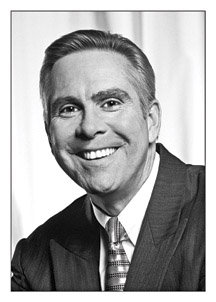As the ninth anniversary of the Sept. 11, 2001 terrorist attacks nears, the nation is again dealing with issues of public safety, national security, and individual civil rights – just as it did in the weeks and months after some 2,783 people were killed in that horrific event.
Across the Hudson River, in Manhattan, grieving 9/11 families have in recent weeks protested plans for an Islamic cultural center and mosque near Ground Zero, arguing that it is insensitive for people who share the terrorists’ faith to build a spiritual home so close to where so many died.
In Arizona, protests have also erupted over the state’s new immigration law, which would allow police officers to question the immigration status of people they suspect might be in the U.S. illegally.
At the heart of both controversies is whether certain assumptions can be made about large groups of people who share little nothing more than a race, or a religion, or a language, or a national origin.
“It turned out to be a prescription for disaster.” – Joseph Collum
________
War on Drugs gave rise to practice
“Of the police agencies that are known to have used racial profiling, the New Jersey State Police appear to be the first to use it, as far back as the ‘70s,” Collum said last week. Profiling eventually became a regular crime fighting tool after President Richard Nixon declared a federal “war on drugs” in 1971.
Because of its close proximity to New York City, and its geographic location along the eastern seaboard, New Jersey was perfectly situated to play a key role in the U.S. drug war.
“New York was the drug capital,” Collum noted. “And to get to any of the major population centers on the east coast like Philadelphia or Washington D.C., you had to go through New Jersey. There was this one highway – the New Jersey Turnpike – that had to be traveled.”
As the drug war kicked into full swing in the 1980s with the advent of crack cocaine, he said, police agencies were looking for ways to increase drug arrests, and the New Jersey State Police appear to be the first agency that sought to catch drug dealers in transit on the highway, en route to New York.
“That may have looked good on paper, but it turned out to be a prescription for disaster,” Collum said.
In a series of investigative reports Collum did for My 9, which he details in the book, he found that 96 percent of all arrests made on the New Jersey Turnpike were of African Americans, even though they were only 13.5 percent of drivers.
An elite force
It hadn’t always been this way, Collum said.
The New Jersey State Police actually had a reputation as an elite force – on par with the Federal Bureau of Investigation – that had helped break a number of organized crime cases. But Collum states that as organized crime receded and drug enforcement came to the foreground, some of the agency’s most experienced, older troopers entered other areas of law enforcement. (Many, for example, were stationed in Atlantic City to keep organized crime out of the casinos there.)
They were replaced on the highways, he said, by younger officers who were eager to climb the ranks quickly.
“These younger officers were often told, ‘Go catch drug dealers. Look for guys with dark skin.’ And these officers probably didn’t have the experience or judgment to know they shouldn’t do that,” Collum said.
The more the state police used profiling, the more arrests they made, the more drugs they caught, the more the officers were rewarded for their efforts.
“When you only look at one group of people, it becomes a self-fulfilling prophecy,” he added. “How do you know they’re the people with the drugs? They’re the only people you’re looking at.”
But, “while they were making a lot of arrests, they were also stopping, searching, and interrogating tens of thousands of innocent people who were stopped and investigated for no other reason than their skin color, or their ethnicity.”
Profiling, he noted has since been ended as a law enforcement tool on the turnpike.
E-mail E. Assata Wright at awright@hudsonreporter.com.
